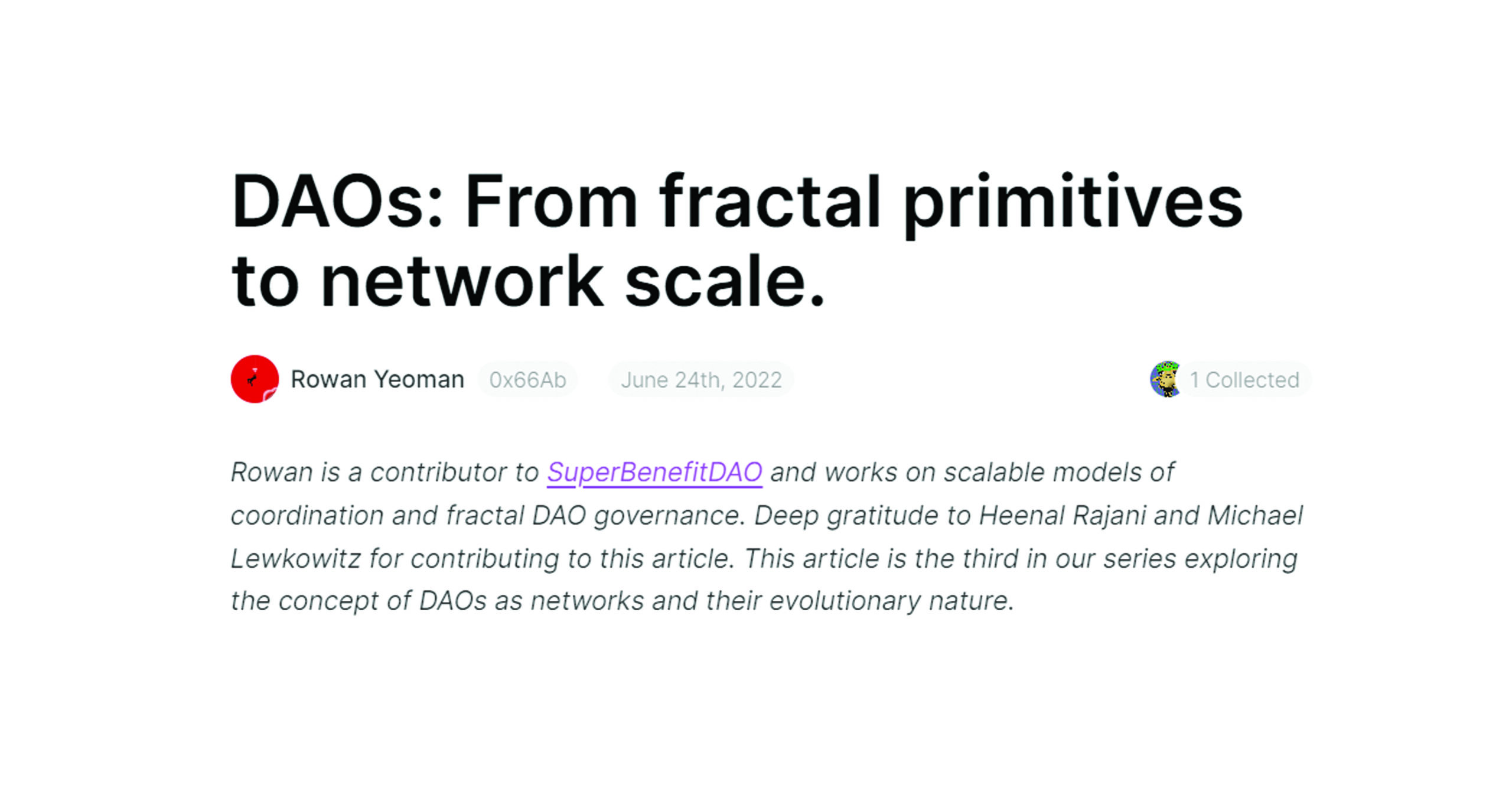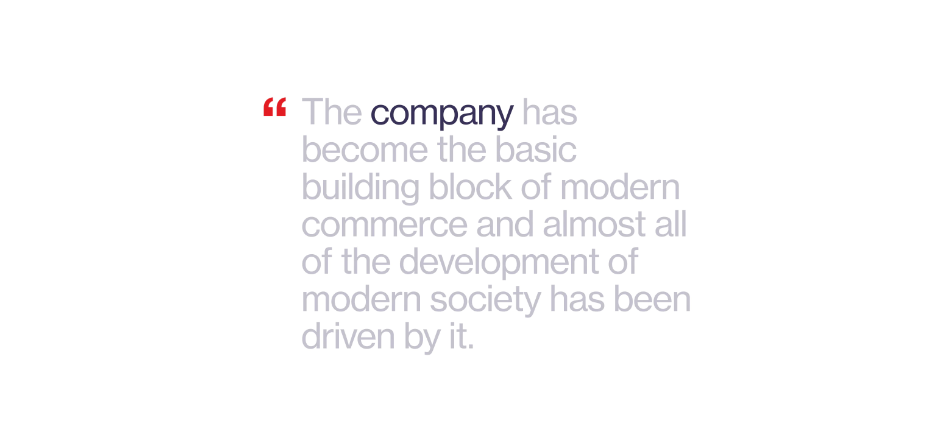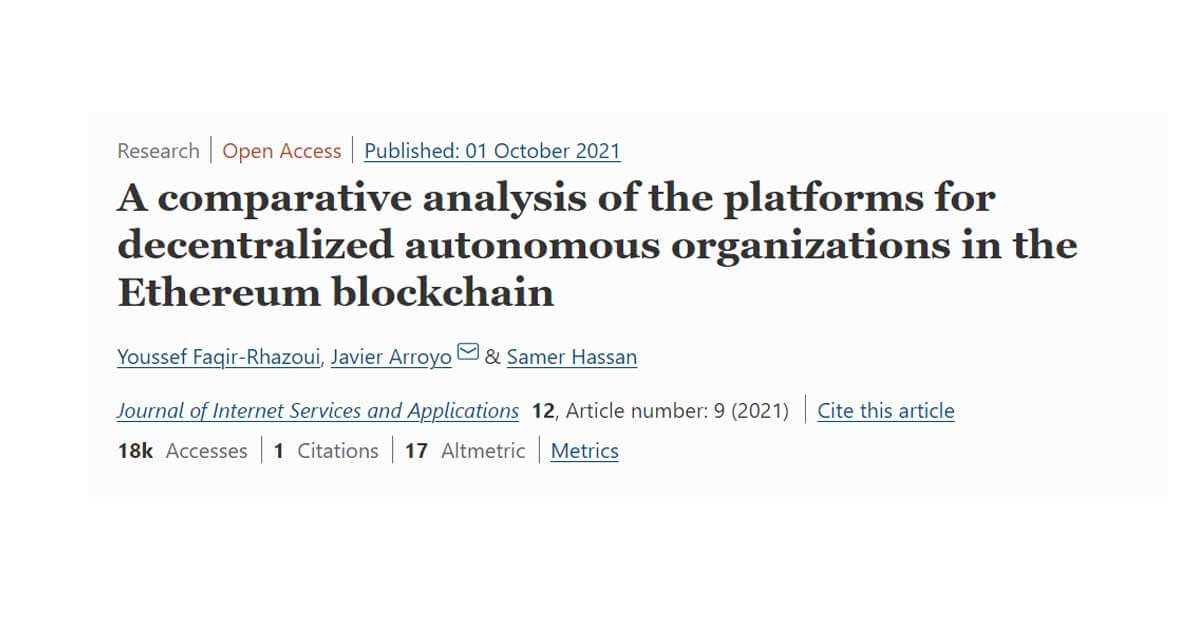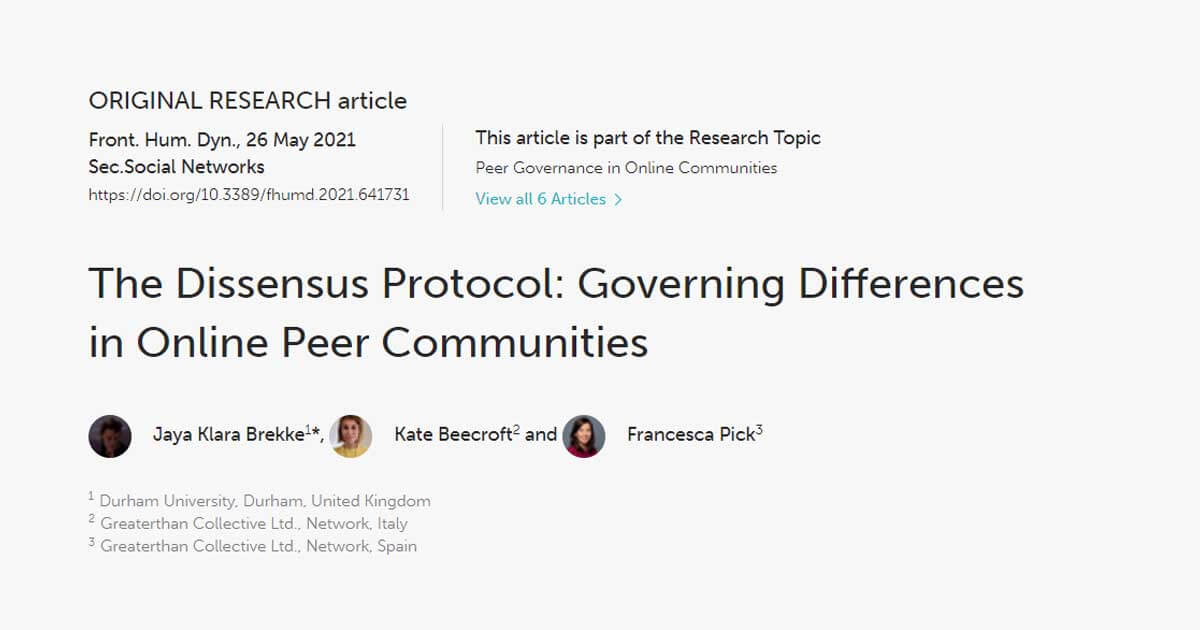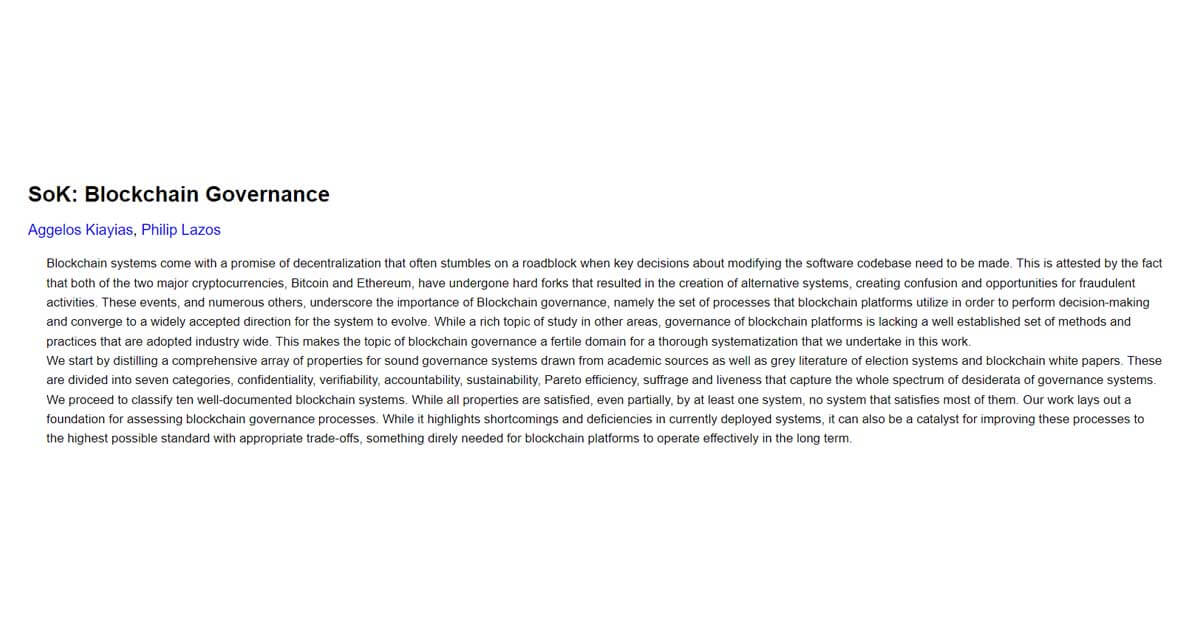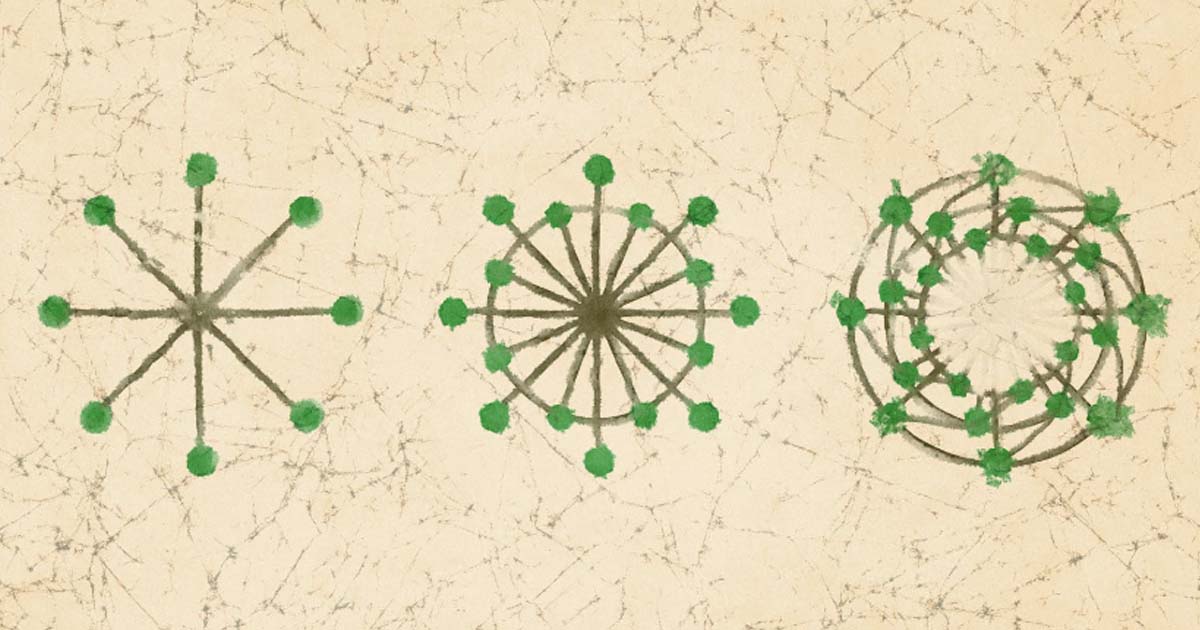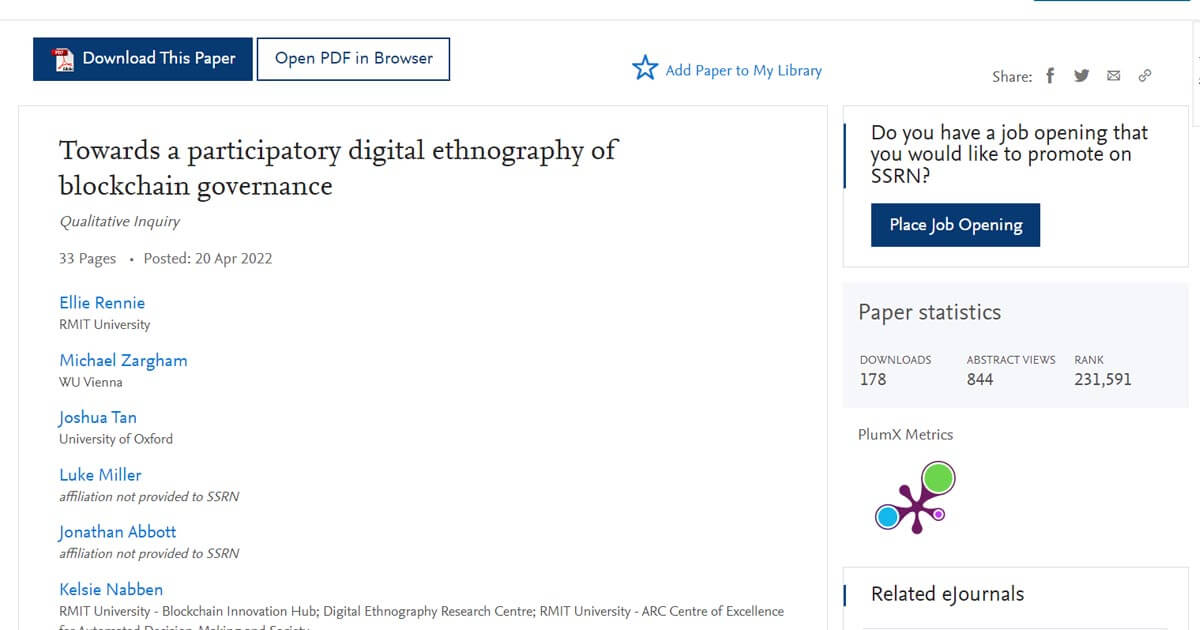Governance
Authors: Vasu Nigam, Kyler Wandler, Federico Minicucci
Introduction
As Decentralized Autonomous Organizations (DAOs) have gained popularity and utility over the years, so too have calls for scalable and dynamic DAO governance systems. DAO stakeholders continue to experiment with a variety of system designs, voting mechanisms, and DAO tooling as they attempt to establish and maintain a decentralized organization.
The choice of DAO governance system will have material and potentially irreversible effects on an organization’s potential, so DAO members must be diligent in choosing and maintaining an effective system. This overview will not attempt to prescribe or define a non-existent ‘perfect form’ of DAO governance, but instead provide an aerial view of the current state of governance systems and tools available to DAOs.
What is governance?
It’s helpful to understand the origins of governance when exploring it in the context of DAOs. The term governance, like government, originally stems from the Greek verb kubernaein [kubernáo], meaning to steer. However, the use of the term in its current broader sense, encompassing the activities of a vast array of public and private institutions, gained widespread acceptance only in the 1990s when it was re-minted by economists and political scientists, and shortly thereafter frequently employed by organizations such as the United Nations, the International Monetary Fund, and the World Bank.
Governance refers to the decision-making activities and processes, formal or informal, carried out by organizations including states, corporations, non-profits, partnerships and unincorporated associations. Each of these types of organizations share the need to establish decision rights, specifically: what decisions need to be made, who is responsible for making decisions, who will be held accountable for the impact of decisions, and how decisions are communicated to relevant stakeholders. Carolyn Wilkins, former Senior Deputy Governor of the Bank of Canada, captures the bottom line well in her recent speech on the governance of decentralized finance:
“Governance matters because it establishes rules of engagement and controls that produce organisational effectiveness and efficiency.”
We believe blockchains provide an innovative opportunity for facilitating trustless agreements and transforming the paradigm of how individuals and organizations can collaborate. Blockchain-based governance does so, at least in part, by leveraging automated smart contracts, immutable public ledgers, and decentralized governance tools; it varies materially from legacy forms of governance which usually rely on centralized legal institutions and voting mechanisms.
1. Michael Zargham & Kelsie Nabben, Aligning ‘Decentralized Autonomous Organization’ to Precedents in Cybernetics. It should be noted that both cybernetics and governance trace their etymology to the term “steer” in Greek. The overlap of these two terms becomes more poignant when viewed in the context of cyber governance, such as in the case of DAOs.
Decentralization and governance
DAOs enable a diverse range of participants to engage in decision-making at a scale not previously possible in traditional forms of organizations. While traditional organizational structures (e.g., corporations, cooperatives, and nonprofits) provide mechanisms like shareholder proposals and board elections that allow stakeholders to contribute to decision-making, they generally fall well short of enabling equitable governance participation given their structure and lack of effective tooling. In contrast, the blockchain technology fundamental to DAOs facilitates equitable decentralized governance while also ensuring transparency and auditability of critical decision-making through processes like on-chain voting (See also: Uniswap’s Governance Forum and Snapshot Consensus Forum).
The types of decentralization pursued by a DAO play a crucial role in its governance. The three types of decentralization, aptly described by a16z’s Miles Jennings in his piece titled Principles and Models of Web3 Decentralization – namely (1) Technical, (2) Economic, and (3) Legal Decentralization – must all be considered when deciding on an appropriate governance system. For instance, DAOs must consider issues like how decentralized the governance of the underlying smart contracts is, whether token holders vote directly on-chain or off-chain, and to what extent the execution of decisions is completed autonomously or legally delegated to approved parties.
While iterative experiments in DAO governance have helped the ecosystem to quickly improve, we are still at an early stage and have a long way to go before DAO governance reaches its potential. We will explore existing forms of DAO governance and their related challenges below.
Fundamental concepts of DAO governance
The founding members or the core team members of a DAO typically take the first steps towards developing a governance system by constructing an initial set of governance guidelines which the community can build on and modify along the way. For example, when the Maker Foundation transferred control of the MKR token to the Maker governance community, the Foundation initiated and led critical discussions on the “technical, human and procedural elements” to enable the community to maintain Maker DAO. This included drafting the initial Maker Improvement Plans (MIPs) and providing a vote delegation mechanism. Alternatively, a DAO can start without a well-defined ‘initial state’ of governance. However, this is generally less efficient as it is typically more difficult for the community to decide on such rules through dialogue and consensus without initial guidelines to work from.
Another key decision for those choosing a system of DAO governance is how to most effectively record and execute decisions made by DAO members. Broadly, DAO governance can be implemented either on-chain or off-chain. On-chain governance refers to a mechanism where the proposed changes are decided by a stakeholder vote, usually the holders of governance tokens, by signing transactions which commit votes that are directly recorded on the blockchain. Smart contracts can be designed to execute proposals automatically based on the outcome of the on-chain votes. This removes the need for a trusted third party or reliance on a core team to enact vote results, thus resulting in a transparent and secure method of governance. Off-chain governance, on the other hand, refers to a more informal process of decision-making where stakeholder votes are not submitted as blockchain transactions. Instead, decision making happens through communication tools and community forums such as Discord or specialized governance tools like Snapshot.
Blockchain-based governance primitives
Before proceeding further, it may be useful to understand how changes are made and agreed upon in the Bitcoin and Ethereum networks. While it is open to debate whether Bitcoin and Ethereum fall under the definition of a ‘DAO’, they both incorporate elements of decentralized governance which form the bedrock of DAO governance.
Bitcoin Governance
Bitcoin’s hard supply cap of 21 million Bitcoins and its engraved source code are central to its value proposition. However, Bitcoin is not static. A Bitcoin Improvement Proposal (BIP) is the primary mechanism for “proposing new features, for collecting community input on an issue, and for documenting the design decisions that have gone into Bitcoin.” In line with its open-source and permissionless ethos, there are no restrictions on who can submit a BIP as long as the proposer has the skills and knowledge to submit a relevant change.
A BIP author is expected to initiate a BIP by first informally vetting their idea within the Bitcoin community through appropriate discussion forums to gauge interest. If the BIP author receives a strong positive signal from the community, they can draft a BIP as per prescribed guidelines and submit it to the Bitcoin development mailing list. This is followed by another round of discussions, and once the draft BIP is complete, the BIP editors will merge the proposal to the BIP GitHub repository.
The proposal is then open to further feedback and, if the BIP receives a rough consensus on the mailing list, it is considered ‘final’ or ‘active’. If the BIP results in a change in the underlying protocol code, such a modification will typically require a supermajority vote (typically 95%) by the miners, who will have to add a reference to their hashed block to signal that they accept or reject their implementation.
Once this integration happens, the next step is for the nodes to install the updated software. If enough nodes decide to install the upgrade, the Bitcoin software will reflect the change and the BIP will be activated. If a BIP introduces a new version of software that is not compatible with the previous version and some nodes do not upgrade their software, the non-compatible upgrade will result in a hard fork (e.g., Bitcoin Cash).
Ethereum Governance
Ethereum also has a well-defined process to propose changes to the core protocol. Ethereum governance happens off-chain and involves a wide variety of stakeholders in the process, including ETH holders, users interacting with applications on the Ethereum blockchain, app / tooling developers, node operators, authors of Ethereum Improvement Proposals (EIPs), miners / validators, and protocol developers.
Similar to BIPs, EIPs form an important part of the Ethereum governance process. The formal process for suggesting changes to the Ethereum protocol begins with the proposal of a core EIP. Anyone within the Ethereum community can create an EIP to specify potential new features or processes for Ethereum. This is followed by the EIP author gathering community feedback and inputs while presenting the EIP to protocol developers on the appropriate forum (e.g., AllCoreDevs call). The proposal may then be considered for a future upgrade or rejected. Sometimes, the proposals may be sent back with a request for technical changes or remain in a limbo.
In the case of proposals that make it through the initial screening, the EIP is again presented to the protocol developers after all the changes have been adopted and gets scheduled for a network upgrade, assuming the EIP has been approved, tested, and implemented. Every EIP must be thoroughly discussed, revised, and tested before core developers can include it as part of an upgrade. These upgrades tend to bundle multiple EIPs together because all Ethereum nodes must coordinate to upgrade their software. After the network upgrade is activated, the EIP becomes live on the Ethereum network.
A fork in the network occurs if even a small portion of nodes decide not to upgrade. A hard fork results if the new version of the software is not compatible with the previous one (e.g., the creation of Ethereum Classic).
Evolving DAO governance
As mentioned earlier, both Bitcoin and Ethereum incorporate various elements of decentralized governance — though admittedly rather informally and mostly off-chain. Today, sophisticated DAOs seek to have well-defined governance systems which clearly lay out the rules and procedures to generate and record community decisions.
DAOs adopt both on-chain and off-chain governance in different parts of the decision-making process. Typically, DAOs gravitate towards using on-chain governance for critical or high risk proposals like parameter tweaking, smart contract upgrades, integrations with other protocols, and treasury management. However, many DAOs use off-chain governance for less material decisions or to gauge community interest on a particular proposal, as it’s typically more time-efficient and cost-effective given it doesn’t require payment of transaction fees.
Although economically efficient and common practice, off-chain governance ultimately acts as a hindrance to the benefits of blockchain. An inescapable reality of off-chain governance is that it requires a trusted third party to accurately record and/or execute on community decisions which take place without an on-chain vote. An acute deficiency in these systems are situations in which token holders signal their views and preferences on proposals using tools like Snapshot, but the decision is ultimately executed through the multi-sig wallet (which requires multiple signatures to execute a transaction on the blockchain) by a small committee or group of people who, to some degree or another, utilize their own judgment when making changes to the the DAO.
Although the development of greater on-chain tooling and functionality is essential within DAO governance, various hybrid approaches are currently being utilized to help reduce transaction fee expenses and encourage community participation while still leveraging the transparency and accountability enabled by blockchain. Many DAOs use Snapshot polls to gauge community sentiment while maintaining a primary on-chain voting system for ratifying proposals. Additionally, someDAOs are experimenting with decentralized file storage systems such as IPFS to store the resulting votes and reduce the risk of vote tampering. For example, Decentraland DAO stores votes submitted and the final results in IPFS via Snapshot, thereby allowing anyone to view, audit, and replicate content identifiers.
Voting systems
One of the primary value propositions of a DAO is that it offers an alternative to the centralized governance structures found in organizations like corporations, which concentrate the decision-making power with insiders, typically the board members, founder(s), or institutional shareholders. Whether a DAO succeeds in decentralizing its governance structure is often a function of its voting system, and the willingness of the original development team to relinquish power through this instrument. Developing an effective and equitable voting system is challenging given limited precedent and the need to balance the DAO’s decentralization ethos with other important but seemingly conflicting goals like efficiency and scalability. Over the years, DAOs have experimented with various voting methods in an attempt to reconcile these conflicting goals. We describe some of the most popular DAO voting methods below:
1. Quorum-based token voting
Quorum-based token voting was one of the first systems to be adopted by DAOs, primarily because it is easy to understand and simple to execute. The only prerequisite to pass a proposal is that a minimum threshold (or quorum) of token holders participate in voting. Once this quorum has been met, the proposal is accepted or rejected based on the recorded results of the token holder voting process.
While the simplicity of this voting method is appealing, it can create a plutocratic governance system which is antithetical to the decentralization ethos prominent in DAO communities. Large token holders, including venture capital firms or the founding team members, can disproportionately influence decision-making, mirroring the very same governance problems DAOs seek to resolve.
Another problem with quorum-based token voting is that setting the quorum threshold presents a tricky dilemma, as even the most prominent DAOs have faced the challenge of poor voter participation. A relatively high quorum threshold results in most proposals failing because of voter apathy. At the same time, a low quorum threshold risks passing low-quality proposals, manipulation, governance attacks by malicious actors, or disproportionate influence by a few whales. There is no right answer to this problem, and each DAO must weigh various considerations, like community engagement, token distribution, and safety risks, before setting the quorum threshold.
2. Ranked Choice Voting
Also known as the ‘first-past-the-post’ system in traditional political voting, each voter can choose from the different choices available to them. If one of the choices receives more than half of the votes, that choice wins. If not, the least preferred choice is eliminated, and another round of voting takes place. This process goes on for multiple rounds until a choice has received more than half the votes. Take for example a DAO that acts as a platform for the creation and management of non-fungible tokens (NFTs), uses the mechanism to make decisions about the allocation of funds from the DAO’s treasury and to select new members for the organization. When a vote is held, members can rank their preferences for different options in order of preference. The option with the most first-place votes is selected as the winner. If no option receives a majority of first-place votes, the option with the fewest votes is eliminated and the second-place votes of its supporters are distributed to the remaining options. This process continues until one option receives a majority of votes.
While this process funnels the community’s consensus towards the decision with the strongest support, it is currently a cumbersome and complex process. In an ecosystem where community participation in voting has been a difficult challenge, this voting method has not gained much adoption.n
3. Quadratic Voting
While most conventional voting methods reveal the choice made by the voter, they fail to factor in the degree of preference in that choice made by the voter. Quadratic voting method attempts to resolve this challenge by enabling individuals to pay incrementally for additional votes if they desire to show strong support for a particular proposal. Since every additional vote costs more than the earlier vote, the rationale is that the voter will cast these additional votes only if they have a strong belief in the proposal.
Proponents of quadratic voting offer it as a solution to the risks of simple and relative majority voting. However, quadratic voting can be complex for average token holders, which can result in increased influence among sophisticated and wealthy token holders. Moreover, the actual cost of additional votes for wealthy token holders may be relatively less than the cost for minority token holders. This again risks distorting the voting process to favor a plutocratic governance. Additionally, quadratic voting faces security risks from sybil attacks, where a user can create multiple pseudonymous identities to manipulate the voting results.
We have seen limited real-world application of quadratic voting in DAOs so far, though there is active research and experimentation ongoing in the DAO community to test how quadratic voting can be implemented securely. For instance, Gitcoin has used quadratic funding to give significant grants for open-source digital public goods and will use quadratic voting to vote on the Stewards Council membership as per a recent proposal. Quadratic voting is also available on Snapshot, where you can combine it with any other voting strategies.
4. Conviction Voting
Another method which seeks to gather additional data about the voting result is conviction voting. Under this method, voters are allowed to change their vote at any point before the predetermined time limit but the impact of a token holder’s vote increases with the time that it remains unchanged. This is an effective way to demonstrate the conviction of token holders in their decision and filter out any extraneous factors which may have influenced their initial vote. However, this is naturally a slow voting process and needs considerable time to form a consensus, which may not be ideal for time-sensitive decisions. This voting method is also at a nascent stage but has seen active experimentation within the DAO community, including by Aragon, Commons Stack, and 1Hive.
5. Delegated Voting
This refers to token holders delegating their votes to a representative of their choice, who they believe might be well-equipped to make decisions on their behalf. This draws inspiration from the principles of representative democracy which have been adopted in many political systems around the world. Delegated voting has emerged as one of the most popular ways to counter voter apathy and low community engagement, with major DAOs like Aragon DAO and Maker DAO making it an integral part of their governance process.
Delegation can help improve voter participation and the efficiency of the decision-making process. If delegates are suitably incentivized, they are also more likely to make well-informed decisions compared to direct participation by token holders who might not have the time, resources, or knowledge to make an informed choice. However, this does result in centralization of power with the delegates, the extent of which depends on the finer details of the delegation mechanism. Most DAOs using delegated governance allow members to withdraw or transfer their delegation rights at any time which mitigates the risk of centralization of power by constantly holding the delegates accountable. Other suggestions to prevent undesirable results include setting term limits for delegates, adequately compensating delegates, and restricting whales from hoarding delegated voting power.
6. Reputation-weighted voting
As we explained earlier, voting power in token-based voting is linearly aligned with ownership of tokens. This may sometimes amplify the voice of large token holders who might have narrow short-term interests and disincentivize thoughtful and active engagement from other members of the DAO community. Reputation-weighted voting has emerged as a potential solution where the power of each vote is linked to the token holder’s ‘reputation’.
Token holders can earn reputation in various ways, including membership history and past contributions to the DAO. This mitigates the risk of new members or malicious actors overtaking the DAO with an intention to harm its future prospects. Any new members must first build their reputation within the DAO to gain sufficient influence in the decision-making process. Some projects have already started experimenting with reputation-weighted voting and the introduction of ‘Soulbound Tokens’ also presents building verifiable digital reputations as an important use case.
One of the key potential issues of this form of voting is that there is no guarantee that the intentions and motivations of a token holder who has earned reputation over time might not change. Therefore, there is a need to adopt guardrails against reputed token holders going rogue (for example, slashing of reputation points in case of misconduct). It might also be desirable to have a dynamic system of reputation points which reduces over time and needs to be re-earned. This can encourage long-term member participation and enable a fluid voting power structure.
7. Holographic Consensus
There are typically no material restrictions on a community member’s ability to make proposals. However, this creates a tension between the efficiency of decision-making and scalability of a DAO. The holographic consensus voting method acts as a screening mechanism to ensure that a DAO community prioritizes important governance decisions, such as those relating to the security or resiliency of the DAO. This is done by creating a prediction market for governance proposals on the DAO. The predictors can wager tokens on the proposals they believe will succeed. If the forecast is accurate, the predictor earns tokens as a reward. If not, they lose those tokens. This voting mechanism can purportedly lead to more efficient decision-making by amplifying important governance decisions and preventing nefarious proposals by inserting the requirement to stake funds on proposals. However, this governance process can be costly and complex, particularly due to the separate token mechanisms of the prediction markets.
Key challenges
Each of the voting systems listed above presents its own unique challenges. Decentralized governance, in its infancy, must not only face the challenge of developing and nurturing safe, legally compliant governance mechanisms, but also compete with more common forms of governance, like centralized corporate models, which have had hundreds of years to evolve. We analyze some of the major challenges of decentralized governance below, but for more information and a useful mental model on the challenges of DAO Governance, see the section titled “DAO Vulnerabilities” in Kelsie Nabben and Michael Zargham’s The Ethnography of a ‘Decentralized Autonomous Organisation’ (DAO): De-mystifying Algorithmic Systems.
1. Efficiency
While the idea of a decentralized and representative approach to decision-making, rather than giving discretionary powers to a centralized board of management, might result in more representative decisions, it also suffers from certain practical drawbacks. Most DAOs will require governance models which support simple and quick decision-making, at least in some circumstances. In such cases, complex or elaborate governance models can seem like more of a bug than a feature, particularly when proposals are vague and open to interpretation.
2. Voter apathy
Using blockchain technology for voting may reduce the cost of coordination within an organization but it likely increases the cost to members of the organization given that they are often expected to participate more actively in governance. Participating constructively in the DAO voting process requires substantial and sustained attention. Moreover, the complexity of coordinating decision-making between a large number of token holders can also lead to ‘governance paralysis’ which subsequently results in more voter apathy. While voter apathy and cost are issues, they will continue to improve as DAO governance processes mature.
3. Concentration of voting power
A common theme in the most popular voting methods we discussed above was the risk of disproportionate influence of voting power among large token holders, which could include venture capital firms and founders. For instance, MakerDAO recently approved major changes to governance despite meaningful criticism from the industry that only 15% of circulating MKR tokens were mobilized for the vote of which the votes delegated by the proposer / MakerDAO co-founder Rune represented nearly three-quarters of the votes. Further, a recent analysis of the governance tokens of ten major DAOs found that less than 1% of all holders have 90% of the voting power.
Such voting patterns can result in decisions that are not aligned with the interest of the broader DAO community and even crush the voices of minority token holders. As discussed earlier, there is promising experimentation taking place to address these issues (e.g., quadratic voting, reputation-weighted voting, etc.); however, many DAOs have yet to develop adequate guardrails to address concerns around incentive misalignment and protection of the rights of minority token holders.
4. Legal challenges
Corporations are ‘limited liability’ organizations, which generally shelter shareholders’ personal assets from the corporation’s liabilities. In absence of similar protections, certain types of unincorporated groups, like DAOs, may face the threat of being treated as general partnerships. This could expose the personal assets of DAO members and investors to the liabilities of creditors and other third parties. The CFTC took this position in its recent action against Ooki DAO, where it alleged that the DAO met the federal definition of an ‘unincorporated association’ as it was a voluntary group of persons, formed by mutual consent, for the purpose of promoting a common objective. The CFTC’s position is that once a token holder votes to affect the outcome of DAO governance, that person has voluntarily participated in the group formed to promote the common objective of governing the DAO protocol and is, therefore, a member of the unincorporated association.
The implication of such a finding would be that individual members of a DAO who participate in the governance process could be held personally liable for the debts or claims against the DAO. While the Ooki DAO action is ongoing and no precedent has yet been set, it has had a chilling effect on the industry, with some major validators taking the position that they will not vote in governance proposals until the law is clear.
There has been some progress in attempting to provide a more tailored framework for the legal structure of DAOs. Although DAOs are free to utilize any number of existing legal entities, a lack of regulatory clarity and the intersection of any number of existing obligations creates uncertainty regarding how the operational structure of DAOs fits into existing entity forms. Vermont, Wyoming, and Tennessee have all passed legislation intended to provide additional clarity in how blockchain projects can utilize limited liability companies (LLCs). Although these efforts indicate progress in the development of how blockchain projects intersect with existing corporate forms, the existing legislation to date has faced criticism for ultimately providing limitations on the existing LLC forms. Some organizations have also tried experimenting with the model of Limited Cooperative Association which is a hybrid between an LLC and a registered corporation.
Legal innovators working in DAOs have also made progress on establishing how DAOs can organize effectively and provide reasonable protection for their members using existing legal structures. DAO Research Collective Head of Research David Kerr and a16z’s Miles Jennings have written extensively on this subject, noting Unincorporated Non-Profit Associations (UNAs) and other existing entity structures as potential avenues for DAO legal and tax compliance.
Considering that regulatory scrutiny of DAOs will only increase in the coming years, it is important to have more proactive discussions about their legal structure, classification of DAO tokens, tax implications, and questions about liability of DAO members. These questions are even more important if DAOs wish to engage with traditional businesses, institutional investors, and other regulated commercial entities. In absence of regulatory clarity, these market players will be reluctant to invest or otherwise transact with DAOs for the fear of potential liability.
5. Security
In line with the larger industry trend, many DAOs have been significantly impacted by hacks and theft of funds in the last couple of years. For instance, BadgerDAO suffered a loss of $150m when attackers used a compromised cloudflare API key to siphon off funds from the user wallets. There have also been instances of DAO members losing money to ‘rug pulls’. It is especially difficult for members to recover their funds after these events because malicious actors often hide behind pseudonymous identities or use privacy preserving tools. Besides cybersecurity attacks, DAOs are also susceptible to ‘governance attacks’ where actors or groups whose objectives are not aligned with those of the larger DAO community might exploit weaknesses in governance procedures and deploy the treasury funds to their own ends.
As the amount of value in DAO treasuries continues to rise, it is important that DAO members are able to be confident that their treasury is safe. These issues can be mitigated by methods like independent smart contract audits by reputable organizations and bug bounty programs. It is also important to educate the Web3 community about the risks of investing in DAOs without due diligence.
Emerging trends
1. DAO Tooling
As the DAO ecosystem matures, the community has begun to develop various tooling solutions that solve some of the critical infrastructure and coordination challenges for DAOs. This includes solutions that provide a modular and open-source software stack for DAOs with standardized governance protocols, voting platforms, treasury management and diversification tools, payment and compensation distribution tools, activity tracking and decentralized identity tools, and DAO legal wrappers.
2. SubDAOs
As explained above, coordination between token holders and managing decision-making at scale is an extremely complex governance problem. One possible solution for mitigating this complexity is to use SubDAOs, which are smaller autonomous working groups within a DAO that carry out specific functions. DAOs employ sub-DAOs to improve the efficiency and accountability of decision-making while maintaining alignment with the ‘parent’ DAO. Many DAOs are experimenting with subDAOs in an attempt to streamline governance
3. Sweat Equity Distribution
‘Sweat Equity’ refers to equity that corporations issue to employees and other stakeholders to align incentives. This equity is generally earned over the duration of a stakeholder’s work with a particular corporation, and it has proven to be a critical feature of their compensation, particularly for early stage companies. Emerging DAOs share many similarities with traditional early stage companies and, taking inspiration from the traditional sweat equity distribution in Web2, some DAOs are experimenting with providing token incentives to contributors, which can be a creative way for DAOs to attract top talent, particularly during their early stages of development.
4. Token Holder Activism
The popularization of delegation has fueled the rise of activism in on-chain governance. Shareholder activism has been a long-standing feature of traditional corporations and has been credited, in some cases, with improving an organization’s governance and generating better financial returns for shareholders. Activism in crypto markets can potentially have similar results.
Conclusion
Given the broad variety of DAO objectives and structures, there is no ‘one-size-fits-all’ approach to governance. When assessing the potential of DAO governance we must remember that DAOs are building new coordination mechanisms using a revolutionary technology that is still in early stages, and that DAO governance will become more effective as the ecosystem iterates on today’s experiments.




